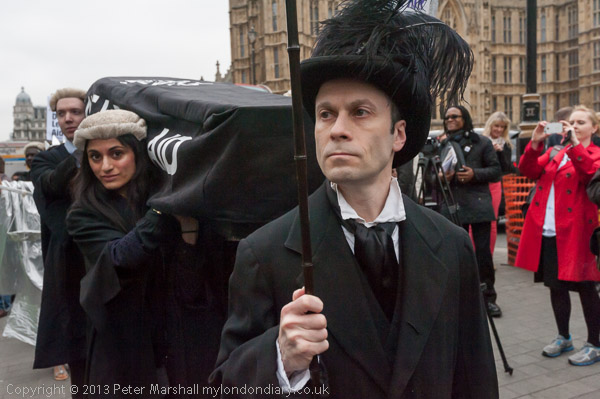
I don’t think the London Criminal Courts Solicitors’ Association organise many protests, but they did a good job on Wednesday 22nd May 2013, with a mock funeral and rally at Parliament against government proposals for justice on the cheap, restricting legal aid and ending the right of clients to chose their solicitor with work going to the cheapest bid.
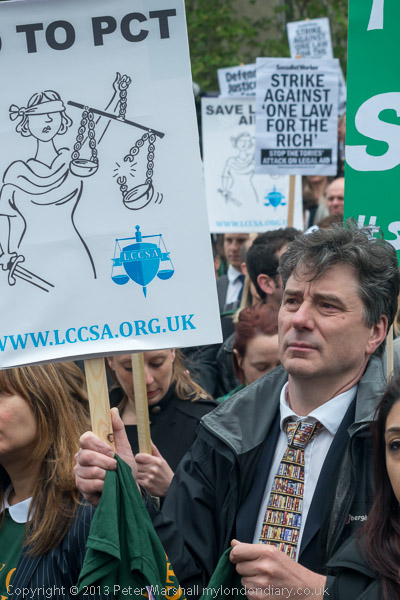
The introduction of price-competitive tendering (PCT) would have the effect of bankrupting smaller law firms, while opening up provision of legal aid to large non-legal companies, including Eddie Stobart and Tesco. It would also prevent those eligible for legal aid from being able to choose appropriate specialists in the legal area involved in their cases.
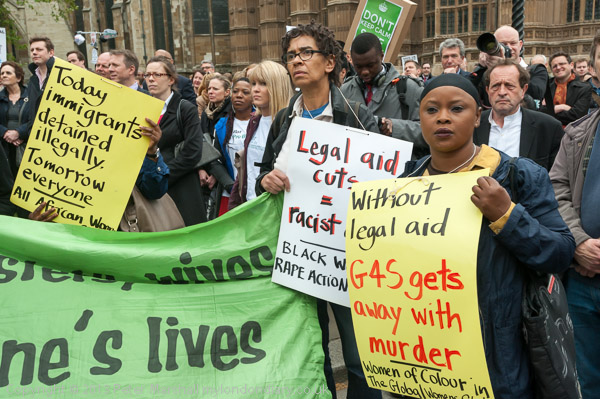
It was a protest that brought together a wide range of organisations an interests, with many speakers from the legal professions, from political parties and some who had been involved in cases of injustice including Gerry Conlan from the Guildford 4, a member of the family of Jean Charles De Menzes, Susan Matthews, mother of Alfie Meadows and Breda Power, the daughter of Billy Power, one of the Birmingham 6. Solicitors who spoke included Clive Stafford Smith, the founder of Reprieve, and Blur drummer Dave Rowntree, and notable among the QCs, Helena Kennedy.
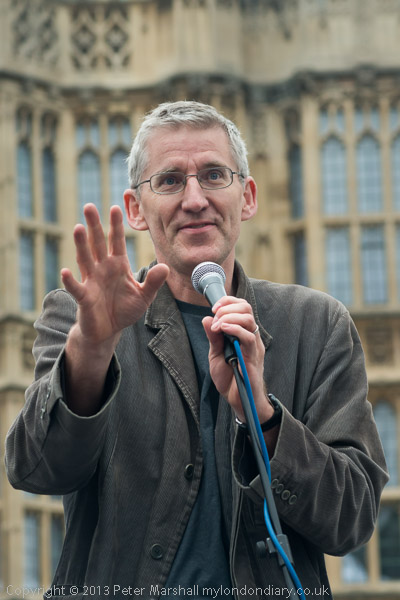
Some, including those from Women Against Rape, Winvisble, Women of Colour in The Global Womens Strike and other groups had come because the proposed changes would have drastic effects on women involved in domestic violence and rape cases, and immigrants fighting for asylum.
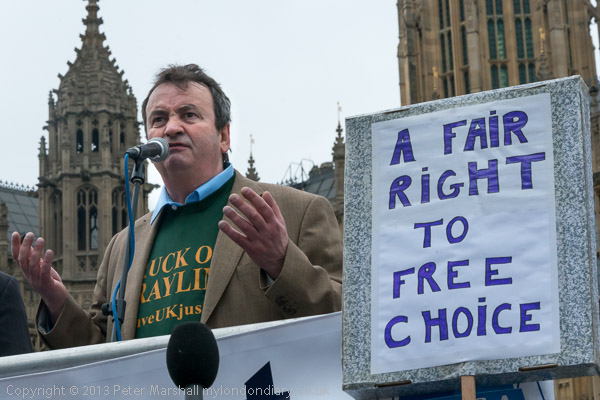
The event had begun with a funeral procession led by a marching jazz band with robed and wigged figures carrying the coffin of Legal Aid, followed by a woman dressed as the Scales of Justice. After the speeches there was a summary by leading barrister John Cooper QC and then the whole assembly delivered its verdict on the Lord Chancellor and Secretary of State for Justice Grayling, ‘guilty as charged’.
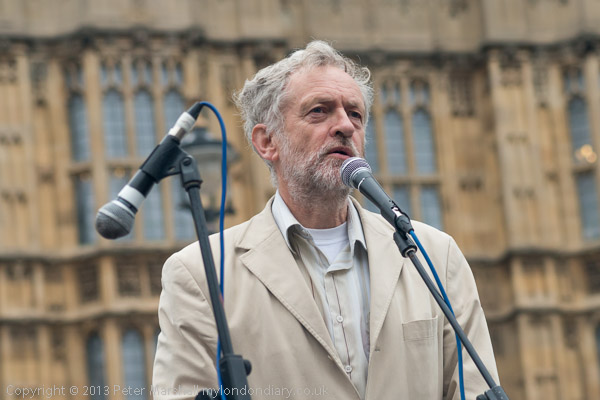
Not for nothing did Grayling become widely known as ‘Failing Grayling‘ for his was a consistent record of incompetency and blunders in various ministerial roles in both Coalition and Tory governments conveniently summarised in the i‘s article 10 disasters that have happened under his watch.
As well as the cuts to legal aid which led to many victims of domestic violence in the courts and family courts facing their abusers without a lawyer, Grayling’s attempt to end legal aid to those in prison was ruled unlawful in 2017. His introduction of high fees for employment tribunals in discrimination cases was ruled unlawful by the Supreme Court – and the government had to refund £27 million. He made an agreement with Saudi Arabia for training in their jails which had to be dropped when other ministers pointed out their abysmal human rights record. Then there was the prison book ban, again found unlawful. And his 2014 overhauling and privatisation of Probation services was a disaster that forced its later reversal.
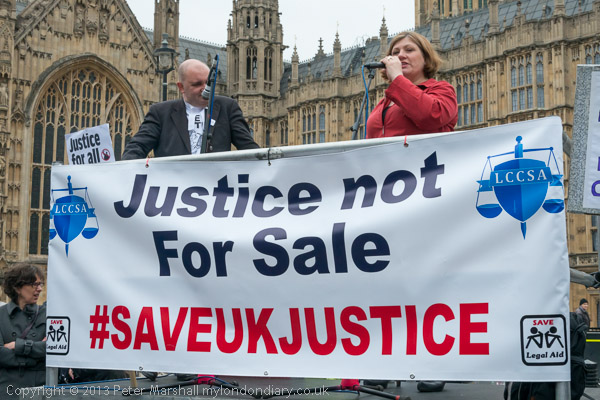
Grayling then moved to Transport, worsening the Southern Rail fiasco, costing us £2bn over Virgin East Coast, contributing to chaos over rail timetabling and awwarding a firm with no ferries a no-deal Brexit contract. And although the i article stopped at 10, Grayling didn’t.
More pictures at Lawyers Funeral for Legal Aid
Daddy’s Pig heads for the Trough – Downing St to Bank
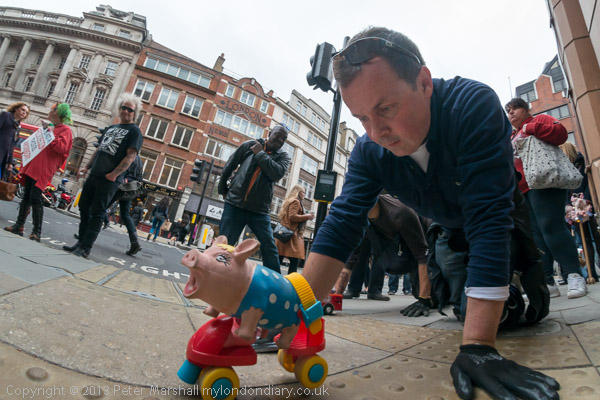
The legal aid protest at Parliament meant I had missed the start of the three mile marathon by artist taxi-driver Mark McGowan on his knees pushing his Daddy’s Pig, accompanied by another protester pushing a fire engine, from Downing St to the Bank of England.
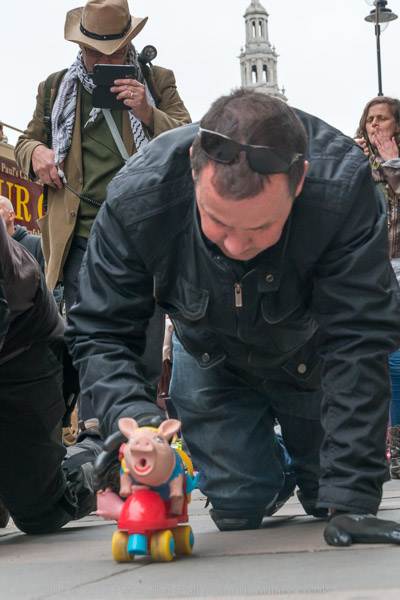
I met them outside the Royal Courts of Justice, where the two had taken a rest before starting off on the second half of their gruelling journey, accompanied by a group of supporters, some of whom were carrying pigs.
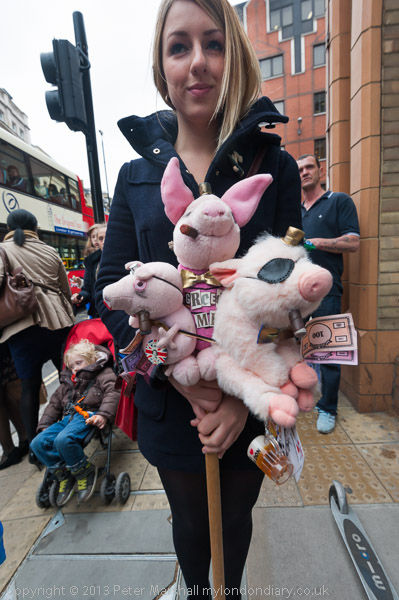
While the country suffers from the effects of the various cuts, bankers, private equity companies, oligarchs and other friends of the Tories were having a feeding frenzy, snouts in the trough as the government privatised much of the NHS and other services and the City of London entrenched its position as the money laundering capital of the world.
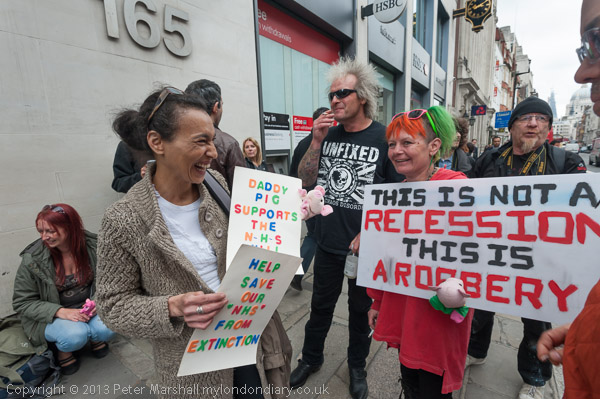
More pictures at Daddy’s Pig heads for the Trough.














